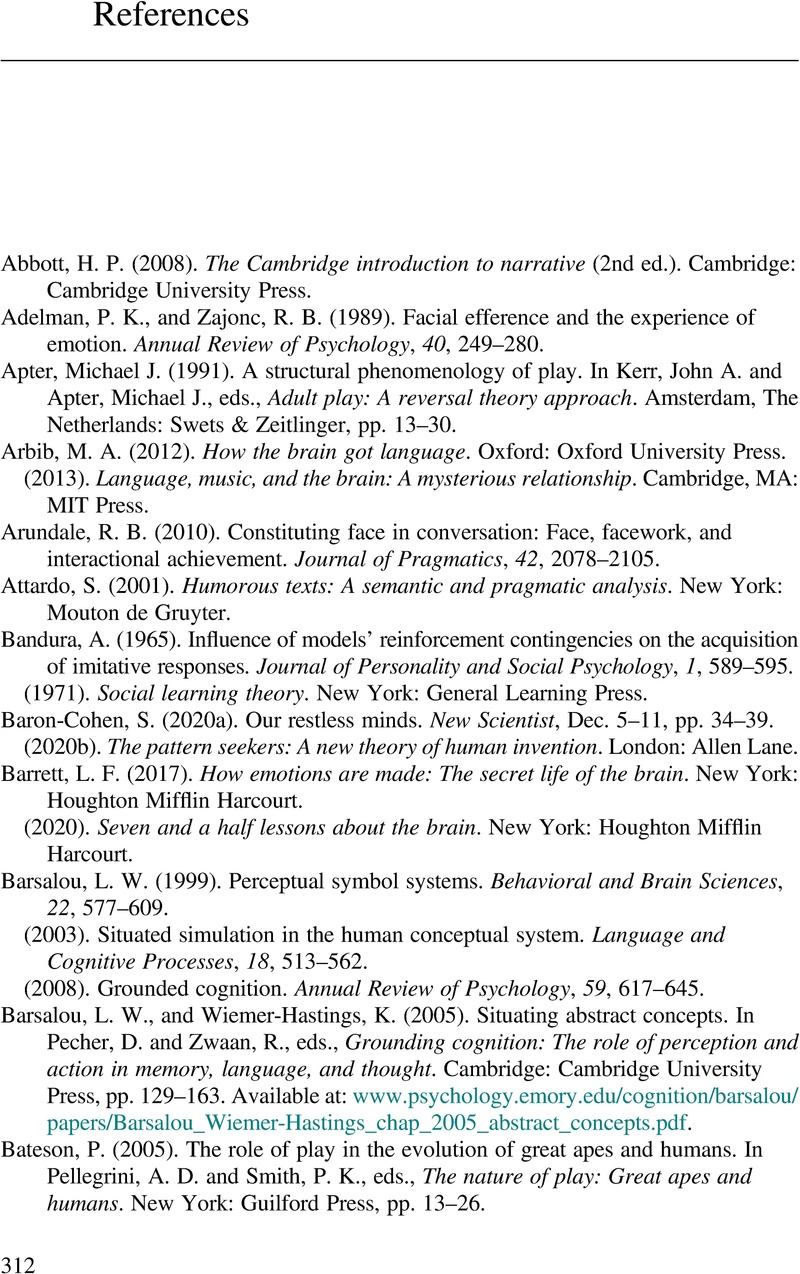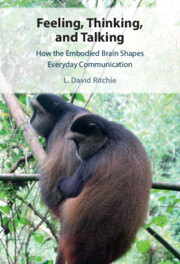Book contents
- Feeling, Thinking, and Talking
- Feeling, Thinking, and Talking
- Copyright page
- Dedication
- Contents
- Figures
- Preface
- 1 The Embodiment Perspective
- 2 Homeostasis
- 3 How Language and Conversation Evolved
- 4 Thinking
- 5 Emotion
- 6 Signals
- 7 Context
- 8 Relationships and Groups
- 9 Conversation
- 10 Play
- 11 Metaphor
- 12 Humor and Irony
- 13 Stories
- 14 Media Technology, Social Reality, and Discourse
- 15 Recap
- References
- Index
- References
References
Published online by Cambridge University Press: 08 September 2022
- Feeling, Thinking, and Talking
- Feeling, Thinking, and Talking
- Copyright page
- Dedication
- Contents
- Figures
- Preface
- 1 The Embodiment Perspective
- 2 Homeostasis
- 3 How Language and Conversation Evolved
- 4 Thinking
- 5 Emotion
- 6 Signals
- 7 Context
- 8 Relationships and Groups
- 9 Conversation
- 10 Play
- 11 Metaphor
- 12 Humor and Irony
- 13 Stories
- 14 Media Technology, Social Reality, and Discourse
- 15 Recap
- References
- Index
- References
Summary

- Type
- Chapter
- Information
- Feeling, Thinking, and TalkingHow the Embodied Brain Shapes Everyday Communication, pp. 312 - 332Publisher: Cambridge University PressPrint publication year: 2022



